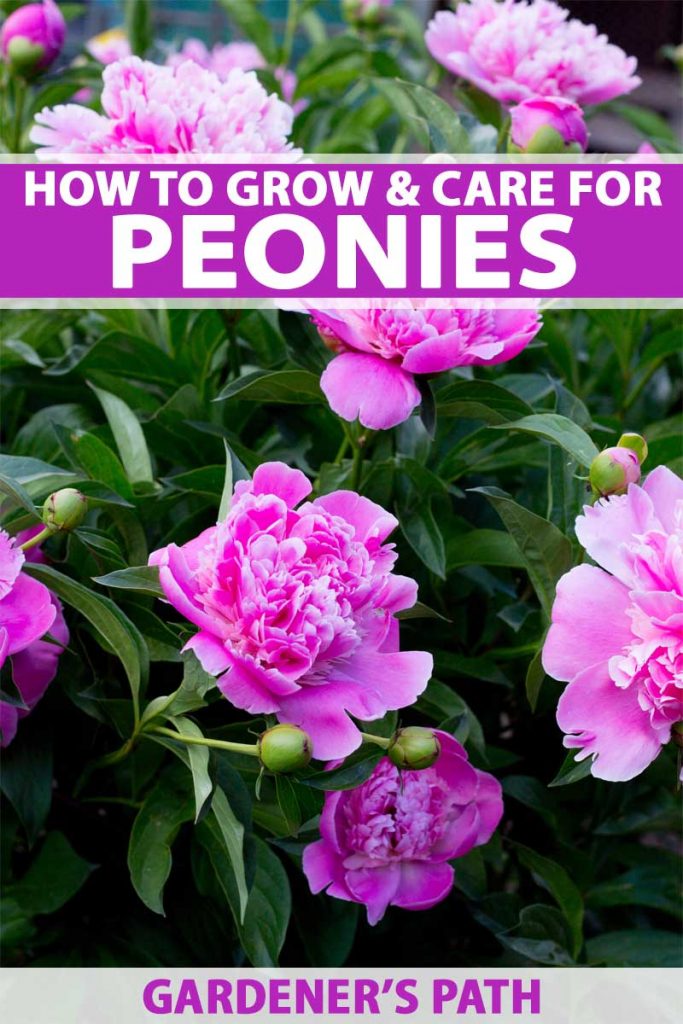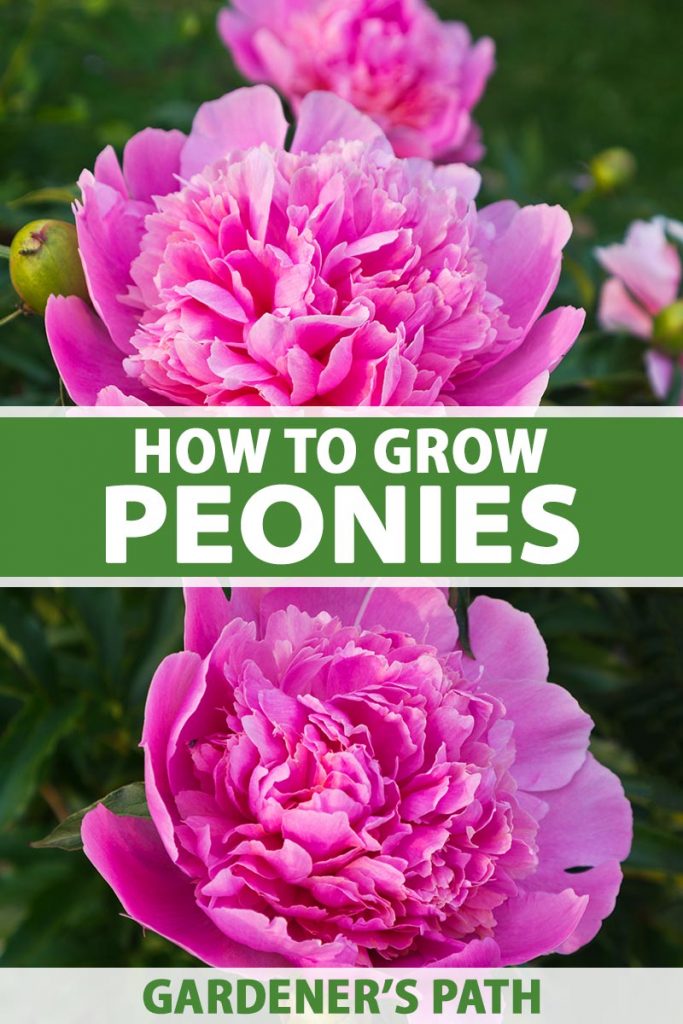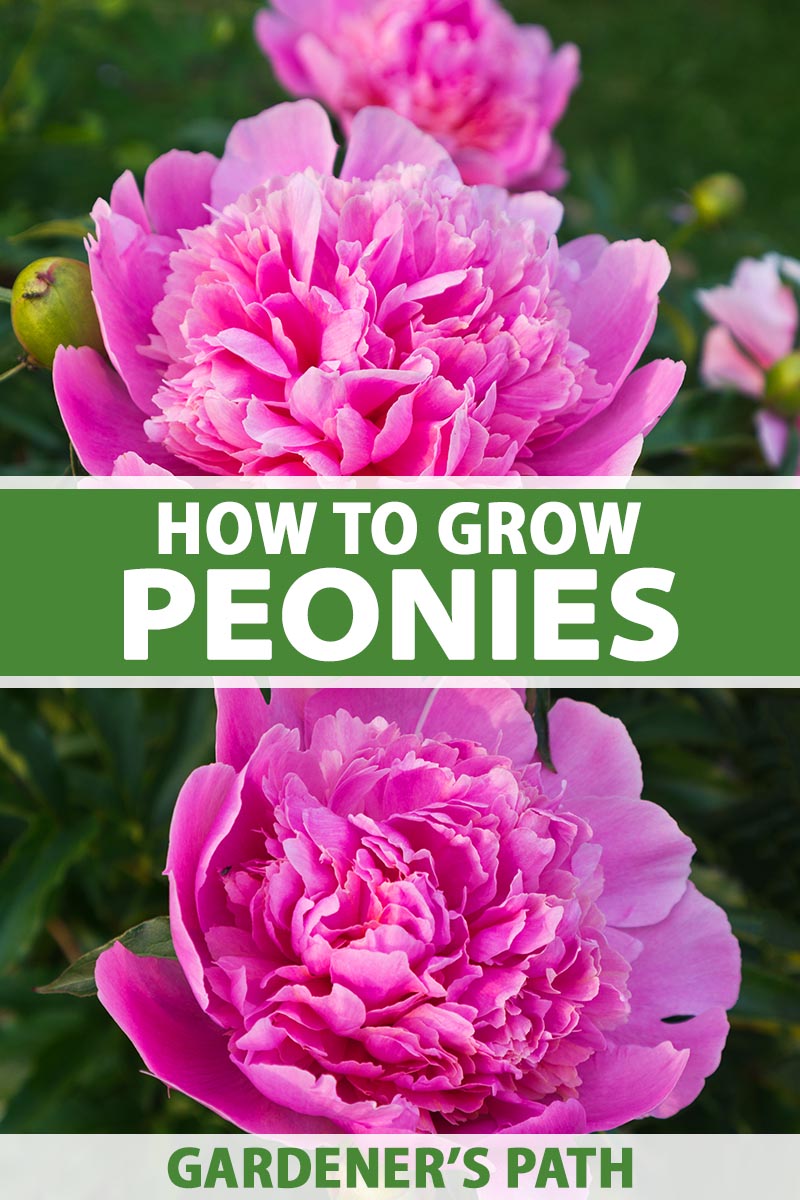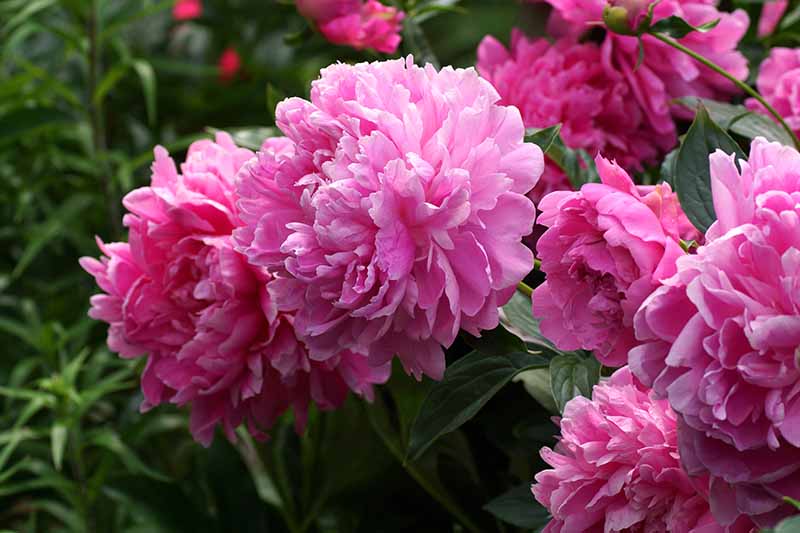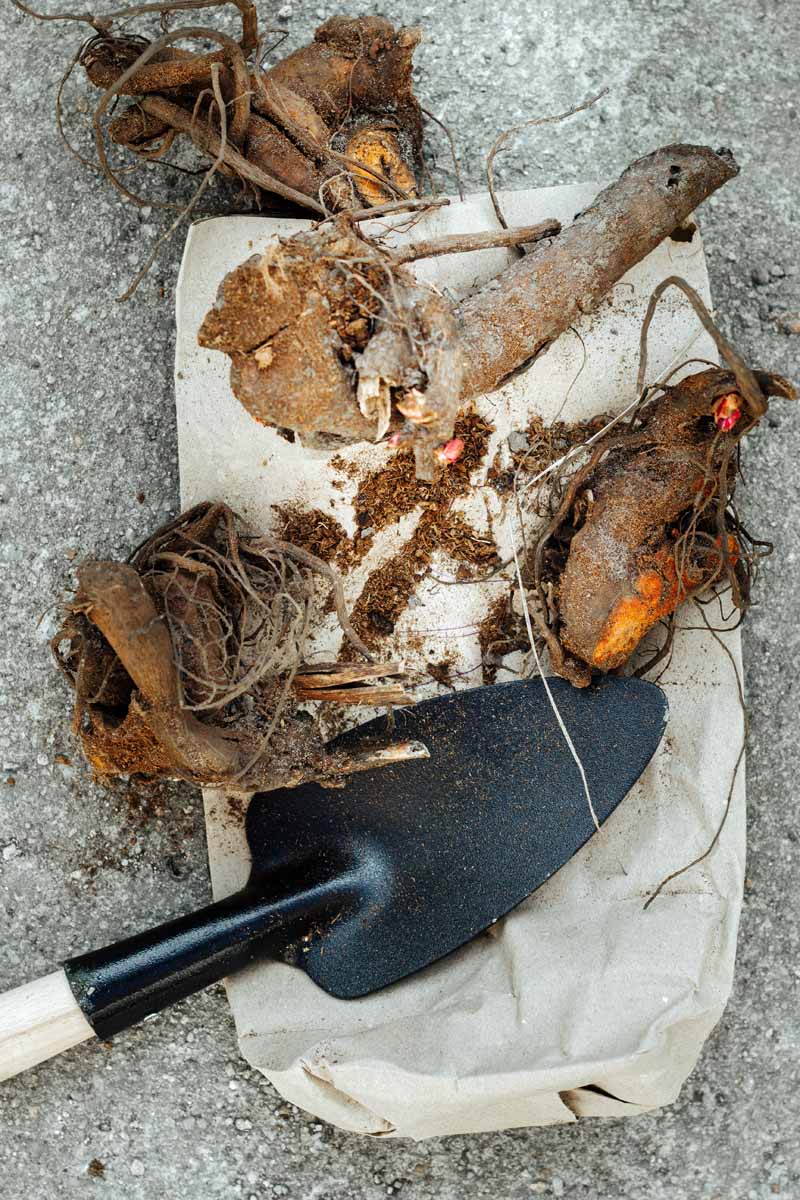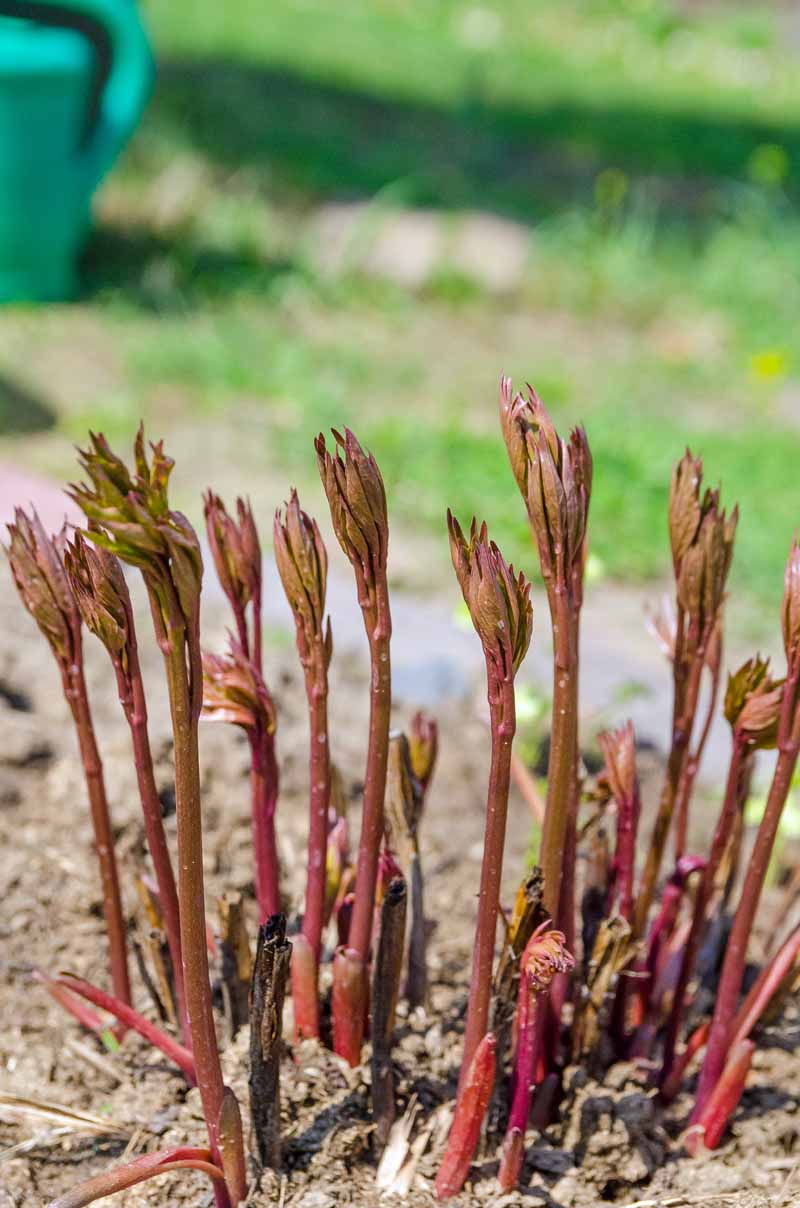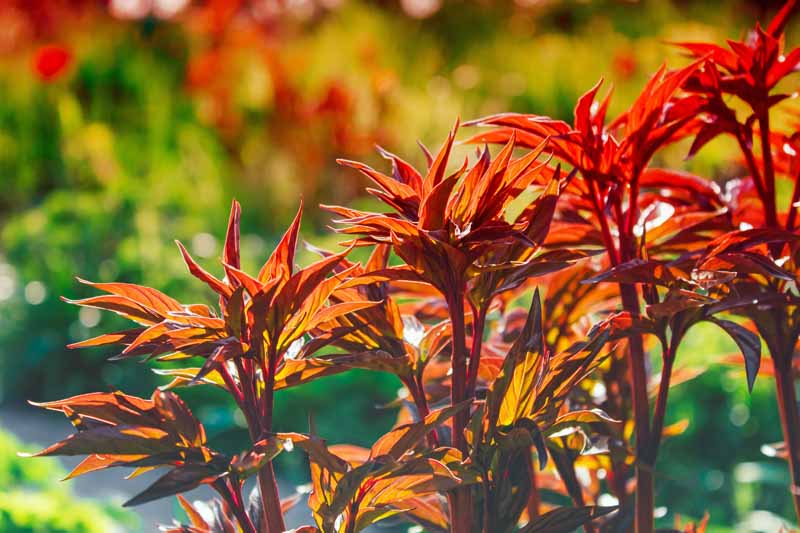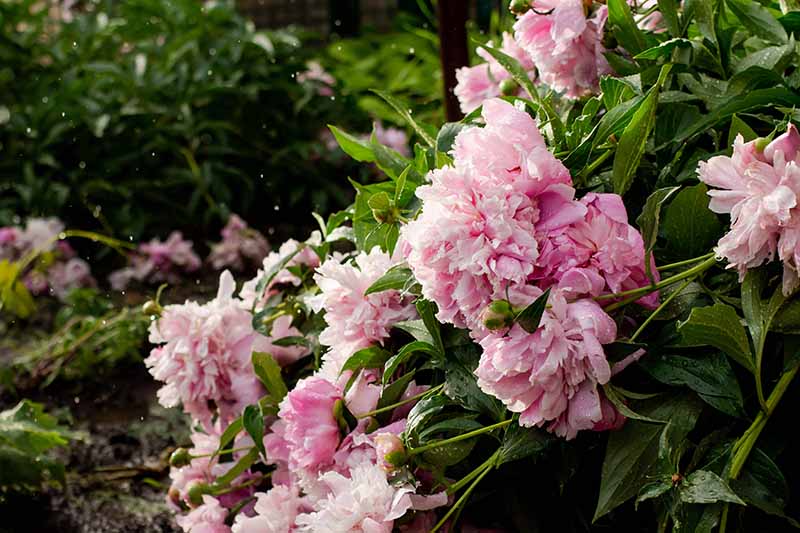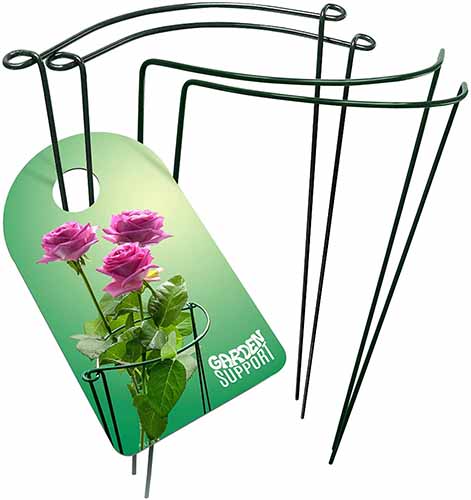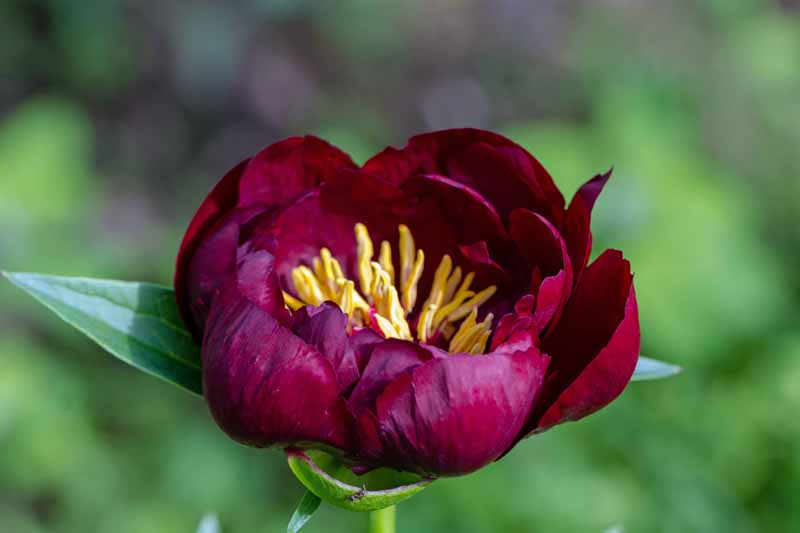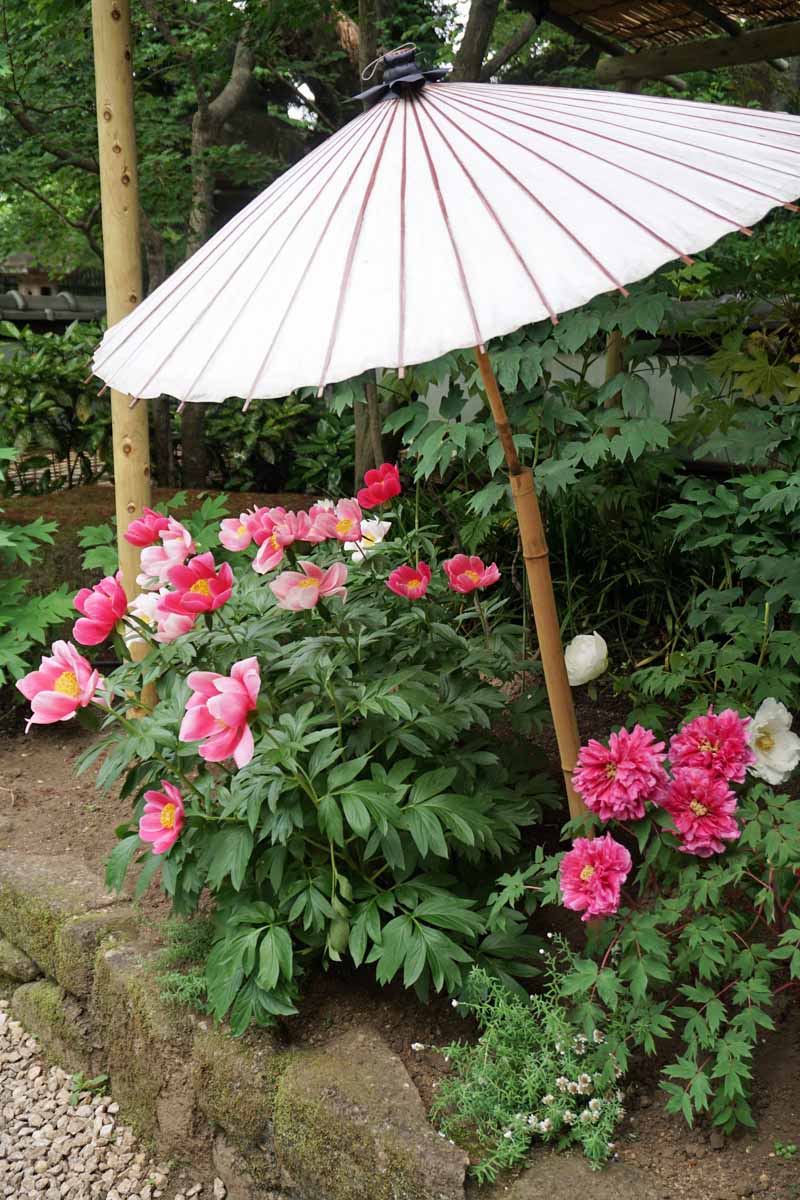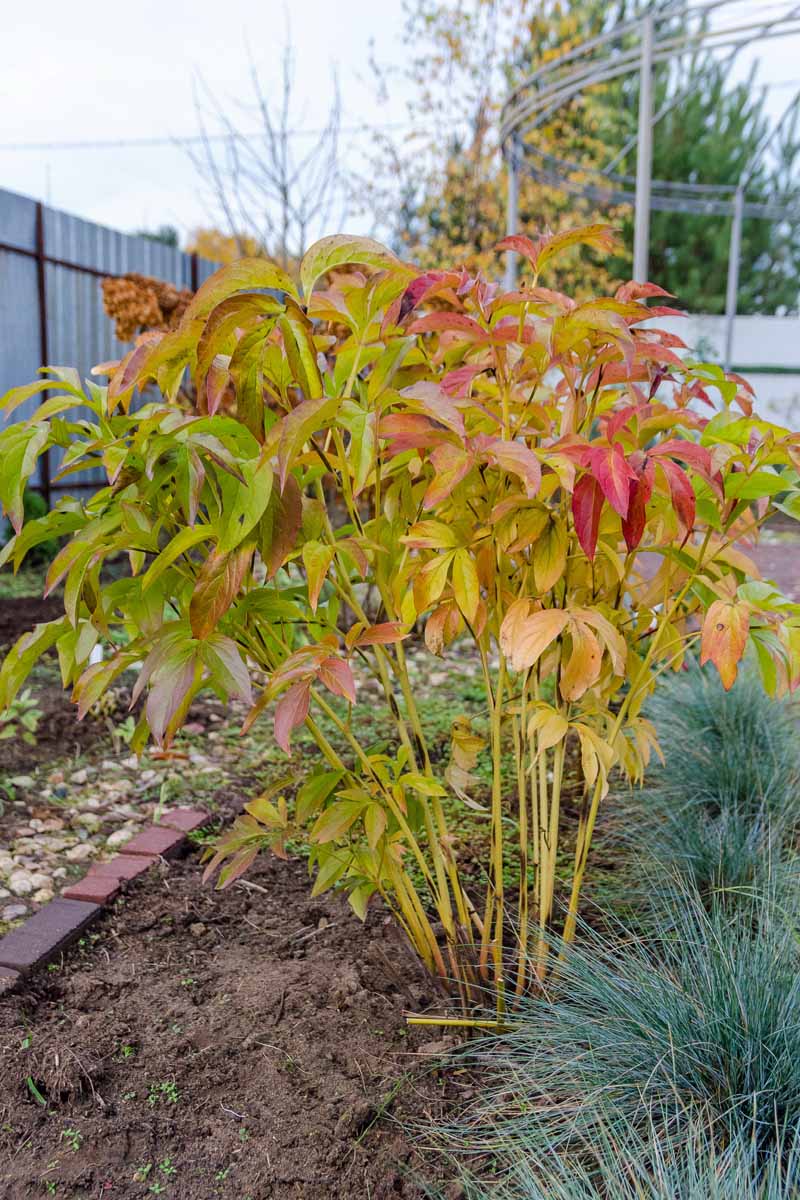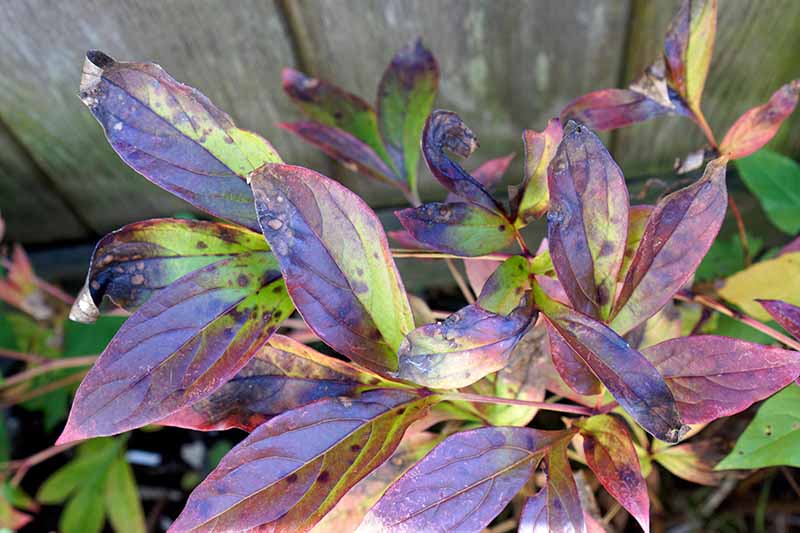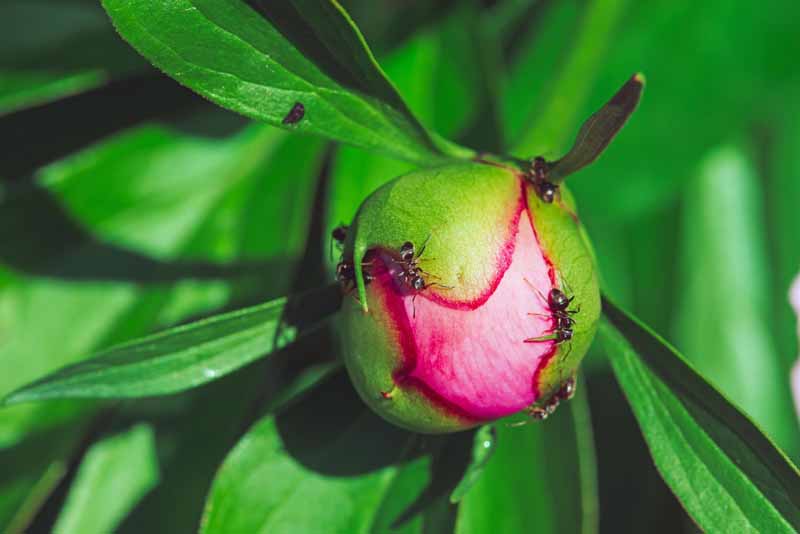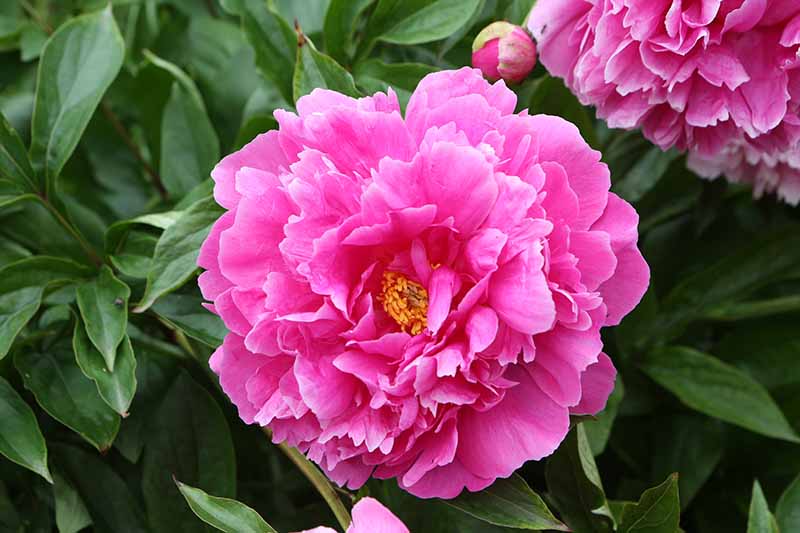The Paeonia genus is the only one in the Paeoniaceae family of plants. There are 33 species and 15 subspecies native to Asia, Europe, and North America. We link to vendors to help you find relevant products. If you buy from one of our links, we may earn a commission. In this article, you will learn how to cultivate the peony in your landscape. Let’s get started!
Cultivation and History
The origin of the name “peony” is the topic of an ancient Greek myth. Versions of the story vary, but the gist is that Asclepius, god of medicine, had a student named Paeon who outshined him by obtaining a healing root at the request of the goddess Leto. Envious, Asclepius planned to murder Paeon, but instead, Zeus turned him into a flower called Paeonia. In the Middle Ages, the peony held a place of honor in Asia and Europe, where it was prized for its use in culinary and medicinal applications, and its beauty as an ornamental specimen. Its voluptuous form came to symbolize affluence, beauty, good fortune, and integrity, and was frequently represented in the arts and literature. By the 18th century, the flower was under cultivation in Japan, and by the 20th, horticulturist Toichi Itoh crossed an herbaceous species with a tree species to create a third type of plant, the “intersectional.” This unique hybrid made its way to the United States, and at about the same time in France, breeder Victor Lemoine was hard at work breeding double-flowered Lemoine hybrid tree varieties. There are three main groups or “sections” of the Paeonia genus:
MoutanOnaepiaPaeoniae
The Moutan section consists of woody Chinese tree peonies, including P. officinalis and P. rockii. Onaepia contains the two native North American species, P. brownii and P. californica. These are wildflowers that are rare in cultivation. The Paeoniae section of the Paeonia genus is somewhat of a catch-all group that contains herbaceous species like P. lactiflora and P. tenuifolia, from which many cultivars originate. There are both Asian and European species here. And just to keep things fun, we also have the aforementioned intersectional hybrid crosses of Moutan tree and herbaceous species. Plants are also grouped by their growth habit, which may be herbaceous, tree-like, or intersectional. You can learn more about the different types of peonies in our guide.
Propagation
There are several methods for starting plants. Growing from seed is discouraged, as it takes at least two years for germination, and the challenges involved usually relegate this type of propagation to the greenhouses of botanists. Bare rootstock or potted plants may be transplanted reliably to start herbaceous varieties. The best time to plant herbaceous varieties is in early fall. Expect flowers within two years. Tree peonies are purchased with the peony of choice grafted to sturdy herbaceous rootstock and potted. Plant them in the spring or fall, and look forward to blooms in about three years. You can also acquire rootstock by dividing plants when they are dormant in early spring or late fall. As a rule, they don’t require dividing, but every 10 to 15 years, you may want to thin them to maintain good airflow between clumps, as described in the section on plant maintenance below.
How to Grow
Plant in the spring after the last frost, or in the fall before the first frost, depending upon the variety. It’s easy to determine which is best because the root stock and plants typically become available for purchase at the appropriate time. For a full season of blossoms, consider planting in succession with early spring tree types, mid-spring herbaceous, and late-blooming intersectionals. Peonies prefer full sun, but can tolerate some shade, particularly in the warmest zones. In part shade locations, tree and intersectional types flower better than herbaceous varieties. If you live in a warm climate, some afternoon shade is good, especially for light colored blossoms prone to fading, and single-flower varieties. You’ll need organically rich soil with a pH of 6.5 to 7.5. Amend with compost as needed. Be sure that it drains well, because the tuberous roots of Paeonia may become saturated and prone to rotting if they sit in standing water. Allow for a mature width of about three feet for herbaceous types and intersectionals, and four to five feet for tree types. While it may take years to achieve such stature, you’ll be glad you planned for it from day one, as it promotes healthy air circulation, and prevents having to relocate plants later on. Prepare the soil by working it into a friable, or crumbly, consistency down at least 12 inches. Mix in some granules of a slow-acting organic fertilizer that is low in nitrogen, to avoid an overproduction of leaves. Now, here’s a key to success: place rootstock with the bud shoots, or “eyes” no more than two inches below the soil surface. For potted plants, keep them at the same level they were in their nursery pot. Plant tree peonies deep enough to cover the graft union with four inches of garden soil or potting medium. This encourages them to grow roots of their own. And cover the crowns of intersectionals with two inches of soil or potting medium. Gently pack earth around the rootstock to stabilize it, and make sure to leave no air pockets underneath. Tamp down gently and water well. Tamp down again. Maintain an inch of water per week through rain or supplementary irrigation while plants become established. Signs of growth are evidence of success. Once established, you can change the watering routine. Unlike some perennials that require even moisture, peonies seem to do best with a deep watering every couple of weeks, after the soil has partially dried out. Be sure to take rainwater into account, and don’t ever oversaturate. You can also grow plants in containers with a depth of two feet and a diameter that can accommodate the mature dimensions of your chosen varieties. Containers dry out faster than ground soil, so use your moisture meter to check them weekly and water deeply as needed.
Growing Tips
Choose a location with full sun and organically rich, well-draining soil.Don’t plant too deeply. Cover rootstock bud eyes and intersectional crowns with two inches of soil, and tree graft unions with four inches.Maintain one inch of water per week during establishment, and then water deeply every two weeks, or as needed in the absence of rain.Limit nitrogen intake to avoid excess foliar growth.Should your plants fail to bloom, check out our troubleshooting guide for assistance.
Pruning and Maintenance
Each spring, as the growing season gets underway and before buds are set, give your plants a dose of slow-acting organic granular fertilizer with a low nitrogen content. Too much nitrogen may result in too many leaves and too few flowers. You can repeat this mid-growing season, and then that’s it for the year. Fertilizing after this point will stimulate growth when plants should be winding down toward dormancy. Once your plants are underway and blooming prolifically, take the time to deadhead spent blossoms to encourage even more blooming. And don’t forget to cut stems to enjoy indoors in vase arrangements. In addition, for tree types, early spring is the time to snip off any tiny shoots growing up from the rootstock. Most trees are grafted, so the rootstock is seldom the same as what you are cultivating above ground. This is also a good time to prune away any dead woody branches, or those that disfigure an attractive, compact shape. A complaint often heard from new peony growers is that the flowers droop. I know from experience that heavy double-flower varieties saturated with rainwater do hang their heads low. Simply push the ends of the two halves of the support into the ground to encircle sprouting herbaceous varieties, and as they grow, it will help hold them up. Strong and Sturdy Plant Support Cages These 9.4-by-15.6-inch interconnected wire half hoops are fabricated from 0.18-inch low-carbon steel. Intersectional varieties do not generally require staking. Droopy heads are not only unattractive, water-laden petals are more susceptible to pests and disease as well. You are much less likely to have issues with single-flower types because they don’t fill with water the way the doubles do, so consider this when selecting plants. Another aspect of peony care is to protect light colored plants from fading and those in the warmest regions from heat stress. If you’ve ever traveled to an Asian botanical garden, you may have seen clever ways to partially shade prized plants with parasols and wicker tents. Consider applying similar cover or a shade cloth to protect yours as needed. After summer wanes, the leaves of many varieties blaze red or bronze before dropping. And while tree types remain standing through the winter, as herbaceous varieties and intersectionals succumb to the first frost, they wilt and seem to melt away. Remove all dead stems and foliage from herbaceous and intersectional varieties when they have died, to inhibit overwintering pests and disease pathogens. In colder regions, you may want to apply a two-inch layer of mulch around the roots of tree varieties, and to cover herbaceous and intersectional locations. As mentioned in the propagation section, Paeonia doesn’t usually require dividing. However, you may divide herbaceous and intersectional types in the fall as you would other tuberous perennials. Note that plants may be shocked by the experience, and may not produce flowers the following year. To divide: Gently unearth a peony clump and shake the soil from the roots so you can see them better. Cut the tubers apart, taking care to ensure that each separate section contains a minimum of three bud eyes. Plant as described in the growing section above. Paeonia takes time to become established, but left undisturbed, it pushes deep roots into the earth. Before winter comes, mark the locations of plants that die to the ground so that when spring arrives you don’t accidentally step on new shoots. You can read more about peony winter care here.
Managing Pests and Disease
The Paeonia genus is not overly plagued by pests. Here are a few outstanding varieties to consider for your gardens:
Coral Sunset
Late spring to early summer blooming Paeonia ‘Coral Sunset’ lives up to its picturesque name with semi-double peachy-coral petals and rich golden center stamens. ‘Coral Sunset’ Stems reach 30 to 36 inches tall with a spread of 24 to 30 inches. Plant in the fall in full sun locations in Zones 3-8. Cover with two to three layers of mulch for winter insulation. Find ‘Coral Sunset’ from Eden Brothers in bags of two, four, or 10 roots.
Itoh Bartzella
Spring-blooming Paeonia ‘Bartzella’ is an intersectional hybrid cross between an herbaceous and a tree peony, boasting buttery double yellow flowers that blush red at their centers. ‘Bartzella’ Mature heights reach 30 to 36 inches with a spread of 24 to 36 inches. Plant in fall or spring in full sun in Zones 3-8. Find ‘Bartzella’ now from Burpee in packages containing one bare root plant.
Karl Rosenfield
The bold crimson/magenta double blooms of P. lactiflora ‘Karl Rosenfield’ are sure to be a hit in late spring to early summer in beds, borders, and cutting gardens. ‘Karl Rosenfield’ Attractive red-tinged stems reach heights of 30 to 36 inches with an equal spread. Plant in spring in full sun locations in Zones 3 to 8. Find ‘Karl Rosenfield’ now from Burpee in packages containing one bare root plant. However, there are a few to watch out for, including:
Bulb MitesHoplia BeetlesMealybugsScaleThrips
If you are planting peonies and notice rotten spots on the rootstock, or have plants collapse, you may have an infestation of bulb mites. Treatment with a sulfur fungicide may prove successful. You’ll know you have a problem with the hoplia beetle, Hoplia callipyge, if you see round holes in your flower petals. It looks like a Japanese beetle, and seems to favor light colored blooms. Handpick the beetles and drop them into a pail of sudsy water to get rid of them. They also like roses, so check them, too. Mealybugs, scale, and thrips are sap-sucking insects that you may be able to get rid of with an application of organic neem oil. Damaged foliage and sticky trails of “honeydew” are telltale signs of their presence. You may notice a lot of ants on the buds of your plants. They’re harmless, and although many folks believe that without them the buds won’t open, this is just a fun myth. The ant and the peony do, however, enjoy an association that benefits them both. The bugs savor the sweetness and are handy to consume sapsuckers, like aphids, should they come along. Such a relationship is called “mutualism.” As for disease, the most likely to present themselves are fungal in nature, and include:
Botrytis BlightPhytophthora BlightPowdery Mildew
Botrytis blight attacks roots, and powdery mildew discolors and deforms foliage. Phytophthora blight is an oomycete, or water mold, that attacks at the soil level. Treat affected plants with a fungicide per package instructions. Plants that get lots of sunlight, aren’t crowded, and grow in soil that drains well are the least likely to suffer the ravages of pests and disease.
Best Uses
Lush peony blooms are perfect for bidding a cheery welcome along walks and driveways. After blooming, the robust green foliage forms a texturally rich backdrop to other garden specimens. Many varieties are fragrant, and all make sumptuous cut flowers to enjoy in vase arrangements. Try grouping several together, or allow each to stand alone as an eye-catching specimen. Enrich a cottage garden with their flouncy, romantic blooms, as well as dahlias, irises, and roses that favor the same growing culture. Fill containers for the patio. Choose those with good drainage holes, and as mentioned, a depth of two feet and a width that accommodates mature dimensions. We had had a water main break in January, and my driveway border garden took a beating from ice and rock salt. Although the peony is somewhat salt tolerant, per the pros at the University of Vermont Extension Department of Plant and Soil Science, it has its limits. Keep this in mind when you plant yours. The good news is that they are deer and rabbit resistant, but remember, a starving animal may eat anything it can find. Grow early, midseason, and late bloomers to enjoy the full spring-to-summer season. And if you just don’t have the space for them to grow in the garden, consider cultivating these stalwart perennials in containers. It’s time to add the peony to your garden planner. Who knows? Your grandchildren may continue to pick bouquets of its lovely blossoms in years to come. Are you growing these lovely blooms in your garden? Let us know in the comments section below, and feel free to share a picture! Do you love flowering perennials as much as we do? If so, be sure to check out some of our other guides next:
Grow Heavenly Hyacinths for Rich Spring Color and Sweet PerfumeCharming Dianthus: Fragrant, Pretty, and Easy to GrowEasy-Care Coreopsis Rewards with Beautiful Blooms
